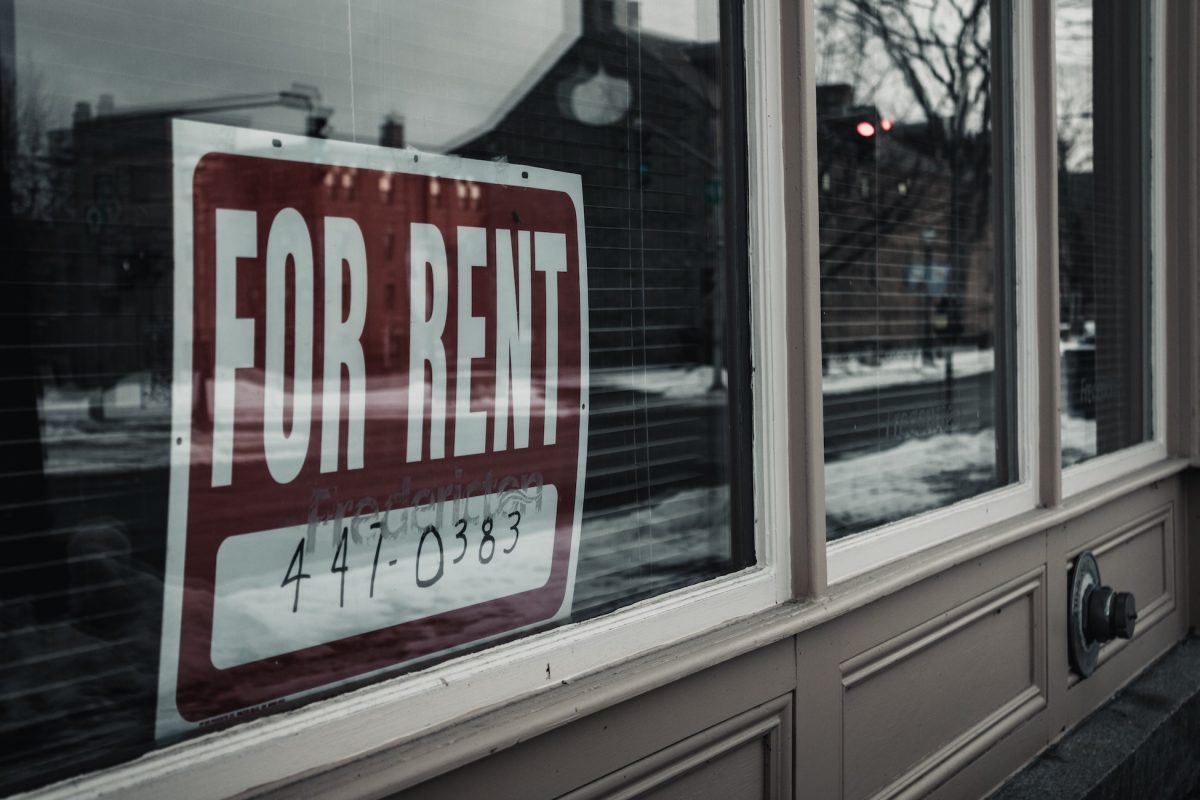Ever felt like a financial superhero with a secret power that lets you dodge personal liability like a boss? Welcome to the intriguing universe of non recourse loans—a financial tool that can feel as elusive and cool as a unicorn in a business suit. This comprehensive guide will break down what non recourse loans are, how they work, and why they might be the perfect sidekick in your financial adventures. Whether you’re a millennial hustling to break into the real estate market or a Gen Z visionary exploring innovative financing options, get ready to unlock the secrets behind non recourse loans with a healthy dose of humor, real talk, and actionable insights.
What Is a Non Recourse Loan Table of Contents
Understanding the Non Recourse Loan: The Basics
The Anatomy of a Non Recourse Loan: How They Work
The Benefits of Non Recourse Loans: Your Financial Superpower
The Trade-Offs: What’s the Catch?
Non Recourse Loans in the Real World: Industries and Applications
The Fine Print: Legal Considerations and Due Diligence
Comparing Non Recourse Loans with Recourse Loans: The Ultimate Showdown
Who Should Consider a Non Recourse Loan?
Tips for Securing a Non Recourse Loan
Non Recourse Loans and Market Volatility
Innovations and Trends in Non Recourse Financing
Resources and Community Support: Your Next Steps
Real-Life Success Stories and Lessons Learned
Expert Strategies for Maximizing Non Recourse Loan Benefits
Frequently Asked Questions About Non Recourse Loans
Your Financial Future with Non Recourse Loans: A Call to Action
Understanding the Non Recourse Loan: The Basics
Picture this: You’re borrowing money, but instead of having your personal assets (yes, your car, your bank savings, maybe even your vintage sneakers) on the chopping block, the lender only has recourse to a specific asset used as collateral. That’s the essence of a non recourse loan! In a nutshell, if you default on your loan, the lender can seize the collateral but can’t come after your other assets. Sounds like a pretty sweet deal, right?
Non recourse loans are typically associated with large-scale financing ventures like commercial real estate—and sometimes even in specialized consumer scenarios. They pivot around the concept that the loan is secured solely by the asset, meaning the lender’s recovery options are limited to that asset alone. This can offer borrowers a safety net, but it’s not without its quirks and trade-offs.
Think of it as borrowing with a shield: your personal wealth stays protected if things go south, as long as the collateral covers the loss. But remember, this kind of magic comes with strings attached, and understanding those strings is the key to using non recourse loans effectively.
The Anatomy of a Non Recourse Loan: How They Work
Let’s dive a little deeper into the inner workings of non recourse loans. At their core, these loans hinge on collateral. Whether you’re eyeing a chunk of commercial property or a specific asset, the lender’s sole remedy in the event of default is to take control of that asset. In essence, the collateral becomes the final boss in a video game—you win by paying back the loan, and if you lose, well, the boss claims the loot.
Here’s the lowdown on the process:
- Application and Underwriting: The lender assesses the asset’s value more critically than your weekend brunch choices. Detailed appraisals, market analyses, and risk assessments are common here, so you better be sure your collateral is top-notch.
- Loan Terms and Interest Rates: Because non recourse loans are considered riskier for the lender (the collateral is the only backup plan), expect more stringent loan-to-value ratios and sometimes higher interest rates. It’s the lender’s way of ensuring that the deal remains attractive in case of default.
- Collateral Management: The asset used as collateral remains central to the loan agreement. If for any reason you can’t meet the repayments, the lender’s hands are tied—they can only liquidate that asset to recover their money.
- Repayment and Default: As long as you continue with timely repayments, your collateral remains untouched. But if you falter, the lender will swoop in to claim the collateral. Importantly, they can’t chase your other assets, which means your personal finances remain shielded.
Understanding these steps is crucial, as it highlights both the unique benefits and inherent risks. Non recourse loans offer a financial safety net in many ways, but they also demand careful planning and discipline to ensure that your chosen collateral is robust enough to support the loan.
The Benefits of Non Recourse Loans: Your Financial Superpower
With great power comes great responsibility—but also some rad advantages. Non recourse loans pack a punch when it comes to protecting your personal assets. Here’s why they might be the weapon of choice for savvy borrowers:
1. Limited Personal Liability
The biggest perk—if you default, the lender can only go after the collateral. That means your personal bank account, home, or other prized possessions remain off-limits. This limited liability structure is especially appealing if you’re dipping your toes into high-stakes investments like commercial real estate.
2. Enhanced Risk Management
Non recourse loans encourage a disciplined approach to borrowing. Since the collateral is the only safety net, both borrower and lender are highly motivated to ensure it’s sufficient to cover the loan. This sense of heightened accountability can lead to more prudent financial planning and risk management.
3. Attractiveness for Investors
Investors are often drawn to non recourse loans because they align with a conservative risk profile. By insulating personal assets, these loans can make investment opportunities more appealing, particularly in commercial real estate, where investors might be juggling multiple deals.
4. Clearer Financial Boundaries
With non recourse lending, there’s a clear demarcation between the loan’s risk and the borrower’s other assets. This clarity can simplify your financial structure and reduce the overall chaos in your personal financial landscape.
These benefits do not make non recourse loans the perfect solution for every situation, but they certainly offer a strategic advantage for those looking to minimize personal risk while tapping into significant financing opportunities.
The Trade-Offs: What’s the Catch?
While non recourse loans bring some impressive perks, they aren’t without their downsides. Much like a trendy yet temperamental gadget, these loans require you to be aware of their quirks and limitations.
1. Stricter Qualification Criteria
Because the lender’s recovery is limited to the collateral, these loans often come with more rigorous underwriting and higher upfront scrutiny. You need to show that the collateral is not only sufficient in value but also stable enough to cover potential market fluctuations.
2. Higher Interest Rates and Lower Loan-to-Value Ratios
Lenders compensate for the additional risk by imposing higher interest rates and requiring lower loan-to-value (LTV) ratios. In practice, this means you might end up with less financing than you’d be able to secure with a conventional loan.
3. Limited Asset Flexibility
The asset you choose as collateral is all that stands between you and potential financial fallout. If market conditions change, or if the asset depreciates unexpectedly, you could face significant financial challenges even if you’re making your regular payments.
4. Complexity of Terms
The documents and terms associated with non recourse loans can be more intricate than those for recourse loans. This means more legal and financial terms to digest, which can be both time-consuming and potentially intimidating if you’re not well-versed in finance jargon.
In short, while non recourse loans offer a valuable way to protect your personal wealth, they also demand a high level of financial acumen and careful assessment of the collateral. Not every asset is well-suited to this style of lending, so make sure you’re trading on all cylinders before diving in.
Non Recourse Loans in the Real World: Industries and Applications
Non recourse loans aren’t just an abstract financial concept—they’re very much a real-world tool used in diverse sectors. Let’s explore some common arenas where these loans shine and why they’re making waves in the financial ecosystem.
1. Commercial Real Estate
In the realm of commercial real estate, non recourse loans are as popular as avocado toast at a trendy brunch spot. Investors often use these loans to finance large property purchases, ensuring that only the value of the property itself underpins the loan. This setup reduces personal risk and makes high-value investments more attractive, particularly when market conditions are unpredictable.
2. Construction and Development Projects
For developers, non recourse loans provide a safety net when constructing new buildings or renovating properties. By tying the loan solely to a project asset, developers can manage risk more effectively while pursuing projects that could potentially revolutionize a skyline.
3. Energy and Infrastructure Financing
In industries like renewable energy or infrastructure development, non recourse loans are frequently used to fund large-scale projects. The collateral in these cases might be the project itself, such as a solar farm or a toll road. The secured nature of the loan helps offset risks associated with long-term investments in these sectors.
4. Specialized Consumer Financing
Though less common, there are instances where consumers might engage in non recourse financing for high-value items such as luxury vehicles or specialized equipment where the asset’s depreciation is predictable. This allows consumers to obtain funding without risking their broader financial portfolio.
By understanding where non recourse loans are commonly used, you can spot potential opportunities within your industry or personal investment strategy. They’re a versatile tool designed for scenarios where you want to tie the loan exclusively to one asset, thereby reducing overall risk.
The Fine Print: Legal Considerations and Due Diligence
Before you sign on the dotted line, it’s vital to appreciate the legal labyrinth that comes with non recourse loans. While their structure offers personal protection, the contractual obligations and legal nuances demand careful scrutiny.
Here are some points to ponder:
Collateral Valuation
Accuracy in valuing the collateral is paramount. Overvaluation can lead to a false sense of security, while undervaluation might result in restricted borrowing capacity. It’s important to work with professional appraisers who understand the local market dynamics and can offer an unbiased evaluation.
Default Conditions and Remedies
The loan agreement will clearly outline what constitutes default and what remedies the lender can pursue. Since the lender’s recourse is limited to the collateral, understanding these conditions is crucial to avoid any surprises if financial challenges arise. Always read the fine print!
Regulatory Environment
Financial regulations differ by jurisdiction, and these can impact the enforceability of non recourse provisions. A seasoned financial attorney can help you navigate these complexities to ensure that your interests are adequately protected.
Taking the time to consult legal and financial experts before entering into a non recourse loan agreement can save you from potential headaches later on. It’s the ultimate case of “better safe than sorry,” ensuring that you’re fully informed about every aspect of the deal.
Comparing Non Recourse Loans with Recourse Loans: The Ultimate Showdown
When it comes to loan structures, the big battle is between non recourse and recourse loans. Understanding the differences can help you choose the right tool for your financial arsenal. Let’s break down the key distinctions in a way that’s as clear as your favorite meme.
Recourse Loans: The No-Holds-Barred Option
With a recourse loan, if you default, the lender has the right to go after not only the collateral but also your other personal assets, including your savings, investments, and other real estate holdings. This means there’s a broader net of liability that you need to be prepared for.
Non Recourse Loans: The Shielded Fortress
On the flip side, non recourse loans restrict the lender to the collateral as the sole source of repayment in case of default. This structure limits your overall personal liability, acting like a protective shield for your broader financial portfolio. However, this protection often comes with tighter lending criteria and perhaps a higher cost of borrowing.
In summary, it’s a balance between risk and reward. Recourse loans might offer more flexibility or a higher borrowing capacity, but they come with greater personal risk. Non recourse loans, meanwhile, provide a legal safety net—but only if your collateral holds its value in the ever-turbulent market.
Who Should Consider a Non Recourse Loan?
You might be wondering, “Is this financial tool right for me?” The answer depends on your financial goals, risk tolerance, and the nature of the asset you have on hand. Non recourse loans are particularly beneficial for:
- Real Estate Investors: If you’re acquiring commercial property or managing large real estate portfolios, non recourse loans allow you to leverage investments while keeping your personal assets off the hook.
- Developers and Entrepreneurs: For those launching new projects or developments, tying financing solely to a project’s assets can minimize personal risk.
- Established Businesses: Companies seeking to expand operations without jeopardizing their entire asset base might find non recourse loans to be an appealing alternative to traditional financing.
- Risk-Averse Borrowers: If you’re cautious about over-leveraging and want a clear demarcation between business risk and personal liability, this type of loan can provide peace of mind.
Essentially, if your collateral has stable, predictable value and you’re confident in the asset’s market performance, a non recourse loan could be a game-changing option.
Tips for Securing a Non Recourse Loan
Landing a non recourse loan requires some savvy preparation. Here are some friendly tips to help you outsmart the system and secure the best possible terms:
1. Know Your Asset’s Worth
Before you even think about applying, get a professional appraisal of your collateral. Lenders want to be sure that the asset can cover the loan amount, so having up-to-date, accurate valuations is a must.
2. Build a Rock-Solid Business Plan
Especially for developers and business owners, a clear, detailed business plan that shows projected revenue, cash flow analysis, and market forecasts can significantly boost your credibility. The more solid your plan, the friendlier the lender will be.
3. Understand the Loan Terms
Dive headfirst into those loan agreements and understand every clause. Know what’s expected, what remedies the lender has if things go south, and how the collateral is managed. If needed, bring in a financial advisor who can decode the legalese.
4. Maintain a Strong Credit Profile
Even though the non recourse structure limits the lender’s reach, your overall creditworthiness still matters. A robust credit score can help secure better interest rates and loan terms.
5. Shop Around
Different lenders have different appetites for risk. Don’t settle for the first offer on the table. Compare terms from multiple institutions to find the best fit for your financial needs.
By following these tips, you’ll be well on your way to securing a non recourse loan that not only meets your funding needs but also safeguards your personal financial well-being.
Non Recourse Loans and Market Volatility
Let’s face it—financial markets can be about as predictable as a cat on a hot tin roof. When conditions get volatile, non recourse loans offer an added layer of protection. The key here is understanding that while market fluctuations can affect the asset’s value, your personal liability remains capped.
This feature is especially attractive in turbulent economic climates. Investors can safeguard their personal wealth without having to bail out of promising ventures at the first sign of trouble. However, remember that if the asset’s depreciation is severe, even this protective barrier might not be enough to cover the gap between the loan amount and the asset’s value.
Essentially, while a non recourse loan can serve as a buffer against widespread financial risk, it still demands diligent monitoring of your collateral’s market performance. Keeping an eye on market trends and staying adaptable is key to ensuring that your financing strategy remains viable.
Innovations and Trends in Non Recourse Financing
The world of finance is evolving, and non recourse loans are no exception. Thanks to technological innovations and shifts in market dynamics, new trends are emerging that could make these loans even more advantageous for forward-thinking borrowers.
Digital Underwriting and Data Analytics
With the advent of big data and advanced analytics, lenders are now able to assess the value and risk of collateral with unprecedented accuracy. Digital underwriting systems can swiftly process vast amounts of market data, providing more precise collateral valuations and, in turn, more competitive loan terms.
Sustainable and Green Financing
Environmental sustainability isn’t just a buzzword—it’s influencing the financing landscape too. More lenders are offering non recourse loans for green construction projects, renewable energy initiatives, and environmentally sustainable developments. This not only aligns with broader market trends, but it also allows you to be part of something that makes a positive impact on the world.
Blockchain and Smart Contracts
Imagine financing that’s as transparent and secure as your favorite blockchain-based cryptocurrency. Smart contracts are beginning to make waves in the realm of non recourse loans, automating complex processes and ensuring that all conditions are met before funds are released. This helps reduce human error and build greater trust between borrowers and lenders.
As these trends continue to gain traction, the future of non recourse financing looks not only innovative but also increasingly aligned with the demands of modern, tech-savvy investors.
Resources and Community Support: Your Next Steps
Ready to take the leap into non recourse financing? The journey is always easier when you have a network of experts, mentors, and peers cheering you on. Whether you’re a first-time investor or a seasoned financial strategist, it pays to surround yourself with the right resources and community support.
Here are some actionable steps to help you move forward:
- Consult Financial Advisors: Seek out advisors with a solid track record in structured financing. Their insights can help tailor your strategy and ensure you’re navigating the nuances of non recourse loans effectively.
- Join Industry Groups: There are plenty of online forums, LinkedIn groups, and local meet-ups where real estate and finance enthusiasts share tips and experiences. Engaging with these communities can provide you with valuable firsthand insights.
- Attend Webinars and Conferences: Look for events that focus on innovative financing, market trends, and emerging technologies in the lending sphere. These platforms are gold mines for networking and learning.
- Utilize Online Courses: Platforms like Coursera, Udemy, and Khan Academy offer courses in finance, investment strategies, and risk management. Bolster your financial acumen and stay ahead of market trends.
- Research and Stay Informed: Follow reputable financial news outlets and subscribe to newsletters that focus on commercial real estate and financing trends. Being informed is one of your best defenses in today’s dynamic market.
Remember, the key to success in non recourse financing is knowledge, preparation, and community support. By leveraging these resources, you’ll be better equipped to navigate the intricacies of non recourse loans and transform them into powerful instruments for growth.
Real-Life Success Stories and Lessons Learned
Sometimes, the most compelling way to grasp a complex subject is to see how others have turned it into a success story. Below are a few narratives from individuals and companies that have navigated the non recourse loan landscape with flair and tenacity.
Case Study 1: The Commercial Real Estate Power Move
Meet Alex—a savvy commercial real estate investor who used a non recourse loan to acquire a portfolio of office spaces in an up-and-coming district. Alex’s deep-dive into market research, coupled with a laser-focused appraisal of his collateral properties, allowed him to secure favorable interest rates despite the higher underwriting standards. Even when market changes threatened property values, Alex’s careful management of his collateral shielded his personal assets, ultimately leading to significant capital gains as the properties appreciated.
Case Study 2: Green Energy Triumph
Then there’s Taylor, who ventured into the booming world of renewable energy by financing a large-scale solar farm through a non recourse loan structure. Taylor’s commitment to sustainability and cutting-edge technology impressed lenders. With a clear and detailed project plan paired with careful risk assessment of the solar farm as collateral, the project not only flourished but also attracted additional investors who were eager to back environmentally responsible initiatives.
Case Study 3: The Entrepreneur’s Safety Net
Finally, consider Jamie—a tech entrepreneur looking to expand a startup without risking personal wealth. By opting for a non recourse loan backed by specialized equipment, Jamie managed to secure the necessary funds to accelerate business growth while keeping personal assets untouched. This strategic move allowed Jamie to scale operations rapidly, with the assurance that overall financial exposure was limited to just the equipment used as collateral.
These success stories serve as powerful reminders that with the right preparation and strategy, non recourse loans can be transformative financial instruments. They illustrate that thoughtful planning, transparency in asset valuation, and adherence to market trends are key drivers in turning non recourse financing into a success story.
Expert Strategies for Maximizing Non Recourse Loan Benefits
Maximizing the benefits of a non recourse loan isn’t about luck—it’s about strategy, timing, and knowing the ins and outs of your financial landscape. Here are some expert-backed strategies to get you started:
Do Your Homework on Collateral
Before you commit, invest the time and resources to get a full evaluation of your collateral. Understand the market trends affecting its value and be prepared for potential fluctuations. This due diligence can help you negotiate better terms and avoid unpleasant surprises.
Negotiate Like a Pro
When discussing terms with a lender, don’t be afraid to negotiate on interest rates, loan-to-value ratios, or other conditions. A well-prepared case, backed by solid data and projections, can make a huge difference in securing a favorable deal.
Keep a Contingency Plan
Even with the best-laid plans, sometimes innovation and market shifts can take an unexpected turn. Having a contingency plan—such as insurance on the collateral or a backup funding source—can help you navigate potential risks without jeopardizing your broader financial health.
Regularly Reassess Your Financial Strategy
Markets are never static, and neither should be your strategy. Regular financial reviews and updates to your collateral’s appraisal will help you stay aligned with market dynamics and adjust your loan strategy accordingly.
With these strategies in your arsenal, you’ll be well-equipped to harness the power of non recourse loans, transforming them into a robust financial tool crafted to support your long-term growth and security.
Frequently Asked Questions About Non Recourse Loans
We’ve compiled some of the most commonly asked questions about non recourse loans to help you better understand this unique financing mechanism.
1. What is a non recourse loan?
A non recourse loan is a type of financing where the lender’s claim in case of default is limited strictly to the collateral pledged for the loan. This means that your other personal assets cannot be used to repay the loan if you default.
2. How is a non recourse loan different from a recourse loan?
In a recourse loan, the lender can seize not only the collateral but also pursue your other assets to recover any remaining debt. Non recourse loans strictly limit the lender’s recovery options to the predefined collateral.
3. In which industries are non recourse loans commonly used?
They are most commonly used in commercial real estate, construction and development projects, energy and infrastructure financing, as well as specialized consumer financing scenarios.
4. What are the risks associated with non recourse loans?
The primary risks include stricter qualification criteria, higher interest rates, lower loan-to-value ratios, and the possibility that the collateral may not hold its value in a volatile market.
5. How can I secure a non recourse loan on favorable terms?
Ensure you have an accurate appraisal of your collateral, build a strong business or project plan, maintain a stellar credit profile, and compare multiple lenders to secure the best terms.
6. Is a non recourse loan right for everyone?
No. They tend to suit borrowers with valuable, stable assets who are looking to minimize personal liability. It is important to evaluate your financial situation and risk tolerance before opting for this type of loan.
7. Can non recourse loans be used for consumer finance?
While less common, non recourse structures can sometimes be applied to high-value consumer purchases, such as luxury vehicles or specialized equipment, where the asset’s value is predictable.
8. How does market volatility affect non recourse loans?
Market volatility can influence the value of the collateral. If the asset’s value drops significantly, it might affect your loan-to-value ratio, although your personal assets remain shielded.
Armed with these insights, you’re better positioned to determine whether a non recourse loan could be the right financial tool for your goals.
Your Financial Future with Non Recourse Loans: A Call to Action
By now, you should have a clear picture of what non recourse loans are and how they can play a pivotal role in shaping a safe, strategic, and innovative financial future. This approach to financing is not just about taking on debt—it’s about making informed decisions that safeguard your personal assets while fueling growth opportunities.
Whether you’re a start-up entrepreneur, a commercial real estate investor, or someone simply exploring smarter financial moves, non recourse loans offer a unique blend of protection and potential. Embrace the idea that your financial journey can have a safety net, powered by a well-chosen asset and bolstered by expert strategies.
The world of non recourse financing is nuanced, dynamic, and ripe with opportunities for those willing to put in the due diligence. Start by evaluating your assets, consulting with seasoned financial advisors, and stepping into a financial arena where risk is managed, not avoided.
Remember, every financial instrument has its own rhythm, and when used correctly, non recourse loans can be the steady beat in your overall strategy for wealth and security. Take control of your financing decisions, educate yourself continuously, and always be open to new trends and strategies—your future self might just thank you!
So, gear up, dive into the details, and take your financial destiny into your own hands. The road ahead with non recourse loans might be intricate, but with careful planning, expert advice, and a dash of daring, you can navigate it like a pro.













